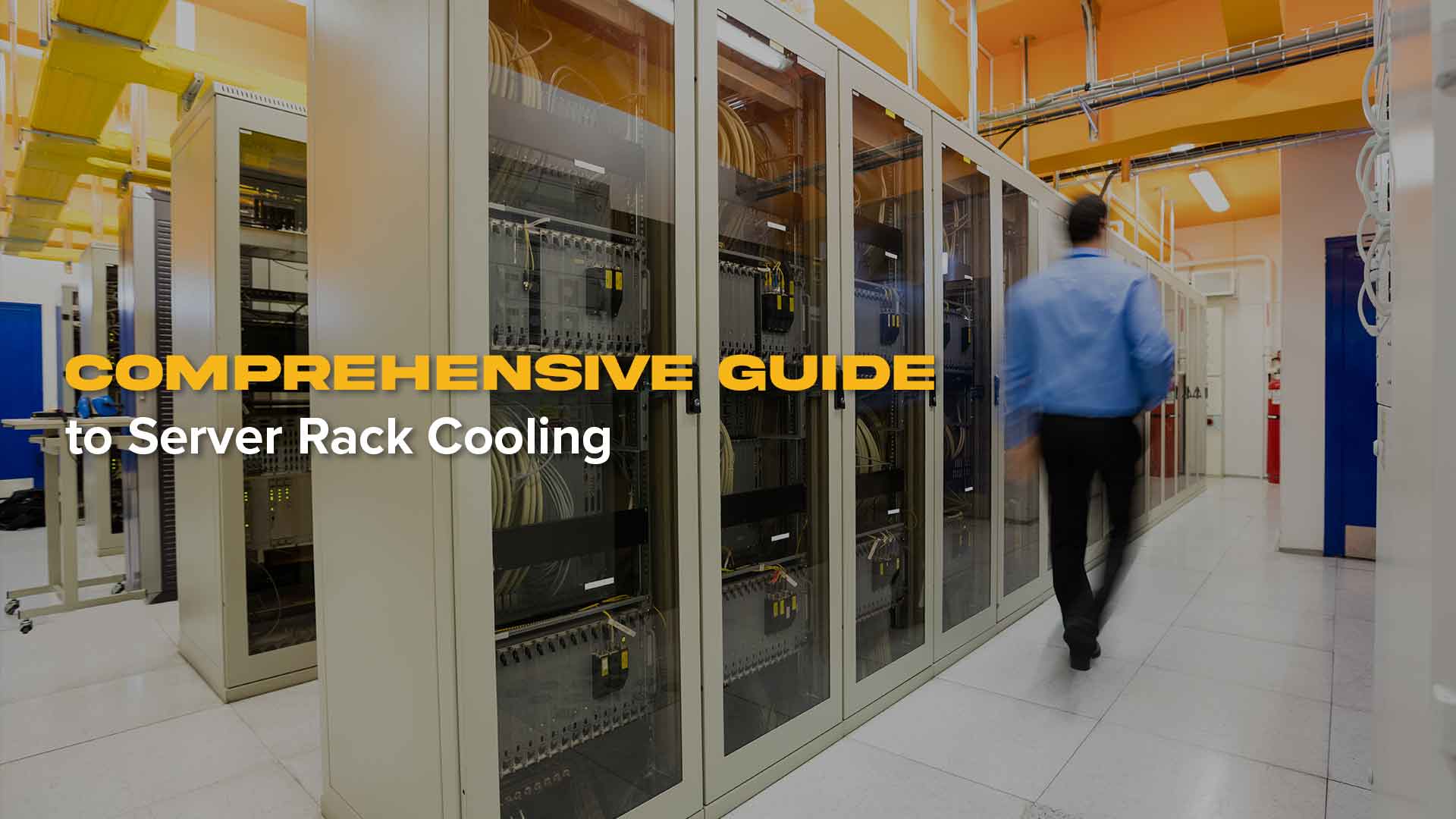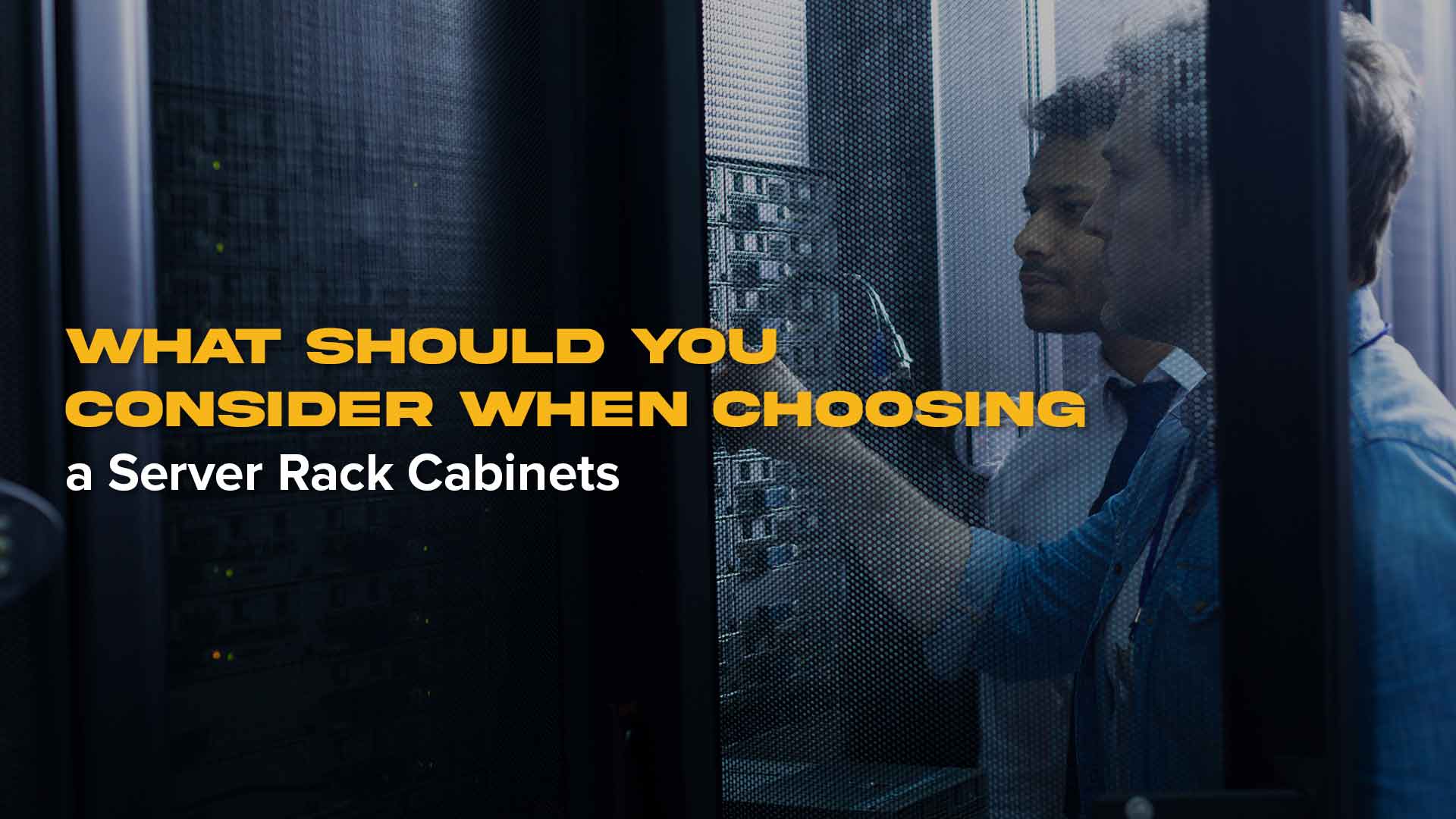The importance of choosing storage solutions cannot be underestimated for any business or person wishing to establish a data center, office network, or home lab. Being rare choices, open frame racks versus enclosed cabinets are heavily debated options among many alternatives. Each one has its own advantages and disadvantages, so the real process of deciding the most appropriate option depends on factors such as security considerations, airflow, and availability of room.
The Role of Equipment Cabinets in IT Infrastructure
The equipment cabinets organize and house IT-related devices, including servers, networking devices, and power distribution units (PDUs). Although the prime business of these cabinets is to facilitate a neat and organized workplace or environment, they also contribute towards cooling efficiency, cable management, and physical or tamper security.
Besides that, the said rack would help disorganization among IT equipment leading to overheating, inefficient space utilization, and increased time for maintenance. A smooth server rack arrangement provides easy access to the hardware and best placement for performance life.
Users making rack selections would want to consider the size, cooling, accessibility, and what they require of the rack: open frame or enclosed. Both certainly do the same job: to house IT equipment. However, the situation becomes quite different when it comes to security, airflow, and scalability; thus, the choice depends heavily on the particular business needs of whoever is selecting the server rack.

Open Frame Server Racks: Pros and Cons
Open frame racks are preferred by those companies that place a premium on easy access and good airflow. These racks are designed simply as metal frameworks with no side panels or doors, consequently making them very light and easy to install.
The Benefits of Choosing an Open Frame Server Rack
The foremost advantage of open frame racks is enhanced ventilation. Open racks promote airflow, provide cooling for the equipment, and thus minimize additional cooling system requirements. This is perfect for data centers with highly optimized climate control systems.
Though, usually the IT professions highly regard open frame racks due to their accessibility. The absence of side panels allows for quick installation, maintenance, and upgrades. Therefore, servers and networking gear may be dealt with with relative ease. This arrangement becomes advantageous for enterprises where hardware replacement and addition are frequently taking place.
Costs would be another strong factor in this regard. Open frame racks usually cost less than closed cabinets and hence work well for startups or small business enterprises that require something efficient but economical.
Potential Drawbacks of Open Frame Server Racks
Another aspect that these racks lack is at least a small security risk. Because the equipment is exposed, it is more prone to tampering or accidental damage; this can be a big problem in shared office spaces or even public environments.
Dust accumulation is another issue. Without the protecting panel, dust and debris can settle on the hardware components and, over time, bring overheating and effective degradation. Because of this, one will have to subject such an area to constant cleaning and maintenance.
Of course, clear open frame racks do not give any sound insulation. Servers and other IT equipment can be quite noisy. Such noise will probably provoke disturbance in office environments. Thus, clear open racks are not suitable for workplaces that require a quieter atmosphere.
Enclosed Equipment Cabinets: Pros and Cons
Enclosed equipment cabinets deliver higher levels of security to an organization that requires them, such as isolating sensitive equipment. All cabinets can be coupled to side panels and doors, while the best of them also lock up to fully protect the equipment.

Why Choose an Enclosed Server Rack Cabinet?
The main reason that most companies go for enclosed cabinets would be safety. Also, these racks feature lockable doors that prevent unauthorized users from accessing certain equipment of IT. Locked doors are important for businesses with sensitive data or working in co working spaces.
Another advantage of enclosed cabinets is cable management. Most of the enclosed server rack cabinets have a built in cable management system to help organize power and network cables efficiently. Clutter is reduced, airflow improves, and accidental disconnects or cable damage are minimized.
Reduction of noise is another important aspect. Enclosed cabinets help in containment and attenuation of sound emanating from servers, thereby working best in office environments where too much noise can disrupt employees.
Challenges of Using Enclosed Server Rack Cabinets
The main disadvantage is that they are costly. Of course, they would cost a little more than the open frame racks because of the extra design and security features these cabinets have. For businesses depending much on budget, it is not easy to get multiple enclosed racks.
Airflow obstruction is yet another problem. Although the enclosed cabinets are generally integrated with built in ventilation systems, they still do not allow natural airflow through open frame racks, thus making it necessary to have additional cooling solutions due to overheating if this were not managed appropriately.
Installation and maintenance will prove to be more cumbersome if the setup is enclosed. Accessing hardware for repairs, upgrades, or troubleshooting must be achieved by unlocking doors and maneuvering around the panels; this can consume time.
Comparison Table: Open Frame vs. Enclosed Racks
To make the decision easier, here is a comparison of open frame and enclosed racks based on key factors:
|
Feature |
Open Frame Racks |
Enclosed Server Cabinets |
|
Security |
Low No physical barriers |
High Lockable doors & panels |
|
Airflow |
Excellent No restrictions |
Moderate Requires ventilation |
|
Cost |
Affordable |
More expensive |
|
Installation |
Easy and lightweight |
Heavier, requires planning |
|
Cable Management |
Requires external solutions |
Built in cable management |
|
Noise Reduction |
None Fully exposed |
Good Reduces server noise |
|
Dust Protection |
None Equipment exposed |
High Protects from dust |
Wall Mount Server Rack Solutions
A company may need to install a server wall mount for its area apart from open frame or enclosed cabinets. This kind of wall mounted rack is a space saving storage solution for equipment.

Why Use a Wall Mount Server Rack?
Wall mount server racks are great for small office spaces, commercial stores, and home IT arrangements that have space constraints. The rack mounted on a wall frees up the floor space for the business to use the area while securing the networking equipment better.
Another essential thing about wall mounting is accessibility. Keeping the rack at a convenient height ensures that maintenance and monitoring happen without bending or dodging obstacles. This is especially important when the setup in question requires a lot of reconfiguring or cable organization.
In most cases, a wall mounted server rack would be even less expensive than a full size cabinet. It is an economical option for small businesses that need a server storing system that is both compact and functional without the cost of a larger infrastructure.
Considerations When Using a Wall Mount Server Rack Cabinet
Wall mount server rack cabinets are advantageous for space saving, but they have their limitations. One concern is the weight capacity, since this rack can only support little equipment. Those with extensive IT infrastructures may find them wanting.
Security is another issue. Enclosed wall mount server rack cabinets offer more protection than open racks, yet they do not provide the same extent of security as full size locked cabinets. Companies that deal with highly sensitive data may want a more secure solution.
Thermal management is yet another issue. Cooling systems may be undermined due to limited airflow in wall mount rack systems compared to free standing racks; to prevent overheating, companies may consider installing supplemental cooling systems.
While the discussion of open frame versus enclosed server racks is still valid for organizations and IT professionals alike, both options have their own advantages. Open frame racks are inexpensive, and easy to access, while enclosed server rack cabinets offer protection, and better cable management. Given that a wall mounted server rack is also a great space saving solution for clients with limited space, users can analyze and assess their requirements in order to come up with an adequate decision for their infrastructure needs.




Leave a comment
This site is protected by hCaptcha and the hCaptcha Privacy Policy and Terms of Service apply.